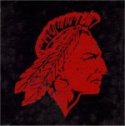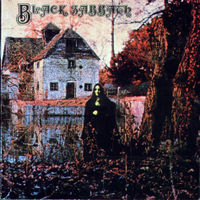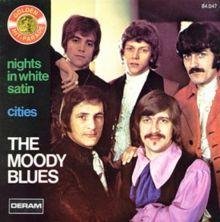 Corning Iowa High School
Corning Iowa High School Class of '72
 Corning Iowa High School
Corning Iowa High School
Chicago
The band was formed in 1967 when a group of DePaul University music students began playing a series of late-night jams at clubs on and off campus. ... In 1971, Chicago released the ambitious quadruple-album live set, Chicago at Carnegie Hall Volumes I, II, III, and IV, consisting of live performances, mostly of music from their first three albums, from a week-long run at the famous venue (along with the James Gang in 1969, one of the few rock bands to play the historic concert hall since the Beatles performed there on February 12, 1964). The performances and sound quality were judged sub-par; in fact, one group member went on record to say that "the horn section sounded like kazoos." The packaging of the album also contained some rather strident political messaging about how "We [youth] can change The System," including massive wall posters and voter registration information. Nevertheless, Chicago at Carnegie Hall went on to become the best-selling box set by a rock act, and held that distinction for 15 years.
The group bounced back in 1972 with their first single-disc release, Chicago V, a diverse set that reached number one on both the Billboard pop and jazz albums charts and yielded the Robert Lamm-composed-and-sung radio hit and perennial fan favorite "Saturday in the Park" (1972 version), which mixed everyday life and political yearning in a more subtle way. Chicago would long open their concerts with the hit song.
from Wikipedia
History of the band, "Chicago"
Songs: 25 or 6 to 4 (1969) Make me Smile (1970) Introduction "Live" (1972) Beginnings (1972) Call on Me (1974)
Dialogue (1975) Colour My World (1977)
The Carpenters
 A string of hit singles and albums
kept the Carpenters on the charts through the early 1970s, including
"For All We Know",
"Rainy
Days and Mondays", and
"Superstar"
(all from the LP Carpenters - their best-selling studio album, with sales
of well over 4 million US copies) in 1971;
"Hurting
Each Other", "It's Going to Take Some Time", and
"Goodbye
to Love" (an early example of the power ballad, from the LP A Song for
You) in 1972; "Sing" and "Yesterday Once More" (from the oldies-oriented
LP Now & Then) in 1973.
"Top
of the World", an album selection on the Song for You LP, was covered
by country artist Lynn Anderson, became a #2 country hit for her and was
rerecorded by Karen and Richard for single release in 1973, becoming the
Carpenters' second #1 single on Billboard's Hot 100 chart late that year.
A greatest hits LP, titled The Singles: 1969-1973, topped the charts in the
U.S. and the United Kingdom and became one of the best-selling albums of
the decade, ultimately selling more than 7 million copies in the U.S. alone.
A string of hit singles and albums
kept the Carpenters on the charts through the early 1970s, including
"For All We Know",
"Rainy
Days and Mondays", and
"Superstar"
(all from the LP Carpenters - their best-selling studio album, with sales
of well over 4 million US copies) in 1971;
"Hurting
Each Other", "It's Going to Take Some Time", and
"Goodbye
to Love" (an early example of the power ballad, from the LP A Song for
You) in 1972; "Sing" and "Yesterday Once More" (from the oldies-oriented
LP Now & Then) in 1973.
"Top
of the World", an album selection on the Song for You LP, was covered
by country artist Lynn Anderson, became a #2 country hit for her and was
rerecorded by Karen and Richard for single release in 1973, becoming the
Carpenters' second #1 single on Billboard's Hot 100 chart late that year.
A greatest hits LP, titled The Singles: 1969-1973, topped the charts in the
U.S. and the United Kingdom and became one of the best-selling albums of
the decade, ultimately selling more than 7 million copies in the U.S. alone.
During the first half of the 1970s, the Carpenters' music was a staple of Top 40 playlists and middle-of-the-road, easy listening and adult contemporary radio. The duo produced a distinctive sound featuring Karen's expressive contralto on lead vocals, with both siblings contributing background vocals that were overdubbed to create densely-layered harmonies. To his role as vocalist, keyboardist, and arranger, Richard added that of composer on numerous tracks. Several of his compositions with lyricist John Bettis became hit records, including "Goodbye to Love", "Yesterday Once More", and "Top of the World".
The Carpenters maintained a demanding schedule of concert tours and television appearances. Among their numerous television credits were appearances on such popular series as American Bandstand, The Ed Sullivan Show, The Tonight Show starring Johnny Carson, and the The Carol Burnett Show. In 1971, the duo appeared in a television special on the BBC in the United Kingdom and were the featured performers in a summer replacement series, Make Your Own Kind of Music, which aired on NBC-TV every Tuesday at 8:00 PM in the United States. In May 1973, the Carpenters accepted an invitation to perform at the White House for President Richard Nixon and visiting West German chancellor Willy Brandt.
from Wikipedia
Black Sabbath
 Pairing
their new heavy sound and the stage antics of Ozzy Osbourne, the band found
success beginning with their first album, the eponymous Black Sabbath, released
on Friday the 13th, February, 1970. They signed to Warner Bros. Records in
the U.S. and Canada, and Vertigo Records for the rest of the world. Their
follow-up album Paranoid, also released in 1970, brought them even greater
attention in America and the UK. The song
"War
Pigs" was written in protest against the Vietnam war and was originally
planned as the title track. The band recorded
"Paranoid"
at the last minute simply to add length to the album. The song ended up becoming
the title track for the album and the band's first single to garner substantial
radio airplay...
Pairing
their new heavy sound and the stage antics of Ozzy Osbourne, the band found
success beginning with their first album, the eponymous Black Sabbath, released
on Friday the 13th, February, 1970. They signed to Warner Bros. Records in
the U.S. and Canada, and Vertigo Records for the rest of the world. Their
follow-up album Paranoid, also released in 1970, brought them even greater
attention in America and the UK. The song
"War
Pigs" was written in protest against the Vietnam war and was originally
planned as the title track. The band recorded
"Paranoid"
at the last minute simply to add length to the album. The song ended up becoming
the title track for the album and the band's first single to garner substantial
radio airplay...
Black Sabbath released another album in 1971, Master of Reality. This was the first Sabbath album to feature a significant amount of acoustic material ("Solitude" contained a flute solo by Iommi). This is an often overlooked switch in style by Black Sabbath, as they are largely known only for their simple, heavy, dark riffs. They added more varying musical elements by the time the band released Black Sabbath, Vol. 4 in 1972. Featuring the ballad "Changes" (containing only vocal, bass, piano and mellotron) and hard rock anthems like "Supernaut" and "Snowblind" (which included strings), Black Sabbath, Vol. 4 was the group's most mature record to date...
By 1973, the group was one of the most popular heavy metal bands in the world, and were a major concert attraction[citation needed]. Their next release, Sabbath Bloody Sabbath, saw the band working with Yes keyboardist Rick Wakeman on a session basis. Along with the title track, the album also included the space-rock styled "Spiral Architect," and the prog-rock inspired "A National Acrobat". from Wikipedia
Songs: Sabbath Bloody Sabbath
Moody Blues

The album plus two singles, "Nights in White Satin" and "Tuesday Afternoon", became massively popular, as was the 1968 follow-up LP, In Search of the Lost Chord. Also included on this album is the song "Legend of a Mind," a song written by Ray Thomas in tribute to LSD guru Timothy Leary which encompassed a masterful flute solo performed by Thomas. Justin Hayward began playing sitar and incorporating it into Moody Blues music, having been inspired by George Harrison. Graeme Edge found a significant secondary role in the band as a writer of poetry, and nearly all of their early albums from the late 60's begin with Mike Pinder reciting poems by Edge that were conceptually related to the lyrics of the songs that would follow. The band's music continued to become more complex and symphonic, resulting in 1969's To Our Children's Children's Children - a concept album based around the band's celebration of the first moon landing. The album reportedly even went to the moon on Apollo space missions. (According to the booklet in the 4-disc anthology "Time Traveler") The album closes with the fan-favorite 'Watching and Waiting', composed by Ray Thomas and Justin Hayward...
In late 1972, a re-issue of the five-year-old "Nights In White Satin" became the Moody Blues' biggest US hit, soaring to number two on the Billboard Hot 100 and becoming a certified million-seller; the song had "bubbled under" the Hot 100 charts on its original release. The song also returned to the UK charts, reaching #9, ten places higher than its original release in 1967....
In 1973, the group took an extended break — originally announced as a permanent break-up - Justin Hayward the only one eager to go on; the other bandmembers feeling overshadowed. (This said by Justin himself in the last and current issue of Higher & Higher magazine 2006) Hayward wrote a song called "Island" with the intention of including it on a potential follow-up album. The Moodies recorded this song in 1973, but then went their separate ways. from Wikipedia
Songs: Your Wildest Dreams (1986)
Guess Who
As the group's lineup changed, so did their sound. Cummings and guitarist Randy Bachman were now the band's main composers, and they moved away from Merseybeat-inspired rock to a sound that mixed rock, blues, and jazz. The 1969 ballad "These Eyes" was the group's first Top 10 US hit for their new label RCA Records. By the beginning of the 1970s, they had moved toward an edgier hard-rock sound with the album American Woman, the title track for which, "American Woman" (coupled with its B-side "No Sugar Tonight") was the group's only No. 1 hit in the U.S. The Top 10 US hit "No Time" also dates from this time.
Lifestyle differences led Bachman to leave the group during their unfinished 1970 album The Way They Were, return to Winnipeg, and form Brave Belt, which eventually evolved into the supergroup Bachman-Turner Overdrive. Bachman was replaced by two guitarists, fellow Winnipeggers Kurt Winter from the band Brother, and Greg Leskiw. Winter became the main songwriting collaborator with Cummings, and The Guess Who continued with more hit singles such as "Share The Land", "Hand Me Down World", "Hang On to Your Life" and "Albert Flasher".
In 1972, they recorded their highly acclaimed album "Live at the Paramount" which was recorded at the Paramount Theatre in Seattle. This preceded an overseas tour in November-December 1972 to Japan, New Zealand and Australia.
from Wikipedia
webmaster - Roger Cox